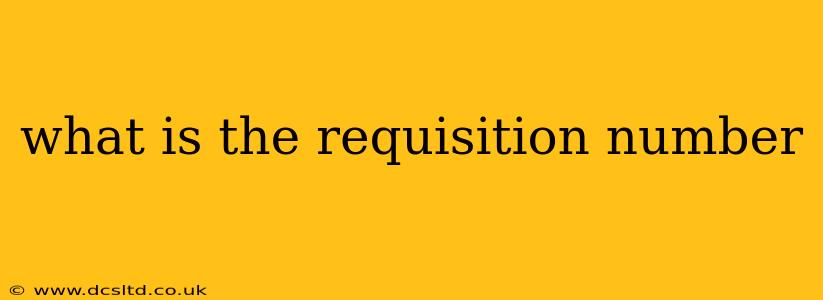The term "requisition number" refers to a unique identifier assigned to a formal request for goods or services. It's essentially a tracking number for a purchase request within an organization. Understanding its purpose and how it's used is key to efficient procurement processes. Let's delve into the details:
What is a Requisition Number?
A requisition number is a crucial piece of information in the procurement process. It acts as a unique identifier, allowing easy tracking of a request from its initiation to its final fulfillment. This number is generated automatically by the requisitioning system (often a software application) and is essential for several reasons:
-
Tracking Progress: The requisition number allows you to monitor the status of your request at any point. You can use it to check if the request has been approved, if the goods/services have been ordered, and when they are expected to arrive.
-
Accounting and Budgeting: The requisition number is used for accounting purposes, linking the request to the corresponding budget allocation. This ensures that purchases are properly recorded and that budgets are not exceeded.
-
Auditing and Compliance: Maintaining detailed records with requisition numbers is crucial for audits and ensuring compliance with internal regulations and external laws. It provides a clear audit trail of every purchase.
-
Communication: When communicating with vendors or internal departments, the requisition number facilitates clear and unambiguous identification of the specific request.
How is a Requisition Number Used?
The requisition number is typically included in all communications related to the request, such as:
-
The initial requisition form: This form outlines the goods or services required, the quantity, and other relevant details.
-
Purchase orders: Once approved, the requisition number is often included in the purchase order sent to the vendor.
-
Invoices: Vendors typically include the requisition number on their invoices to ensure accurate payment processing.
-
Internal communications: The number is used in emails and internal memos to track the progress of the request within the organization.
Where Can You Find a Requisition Number?
The location of a requisition number varies depending on the organization and the systems used. Common places to find it include:
-
Requisition Forms: This is the most common place to find the requisition number, typically located at the top or bottom of the form.
-
Purchase Order Documents: The number will be clearly visible on any purchase order generated from the request.
-
Internal Procurement Systems: If the organization utilizes a procurement software, you'll often find the requisition number within the system itself, associated with the specific request.
-
Invoices and Receipts: The requisition number is commonly included on invoices and receipts as a reference number.
What if I Don't Know the Requisition Number?
If you don't know the requisition number, contacting the relevant department within your organization (e.g., procurement, accounts payable) is the best course of action. They should be able to help you locate it using other information, such as the date of the request or the description of the goods/services.
In conclusion, the requisition number is a vital element of the procurement process, offering crucial tracking, accounting, and auditing capabilities. Understanding its function is essential for anyone involved in requesting or managing the acquisition of goods or services within an organization.
